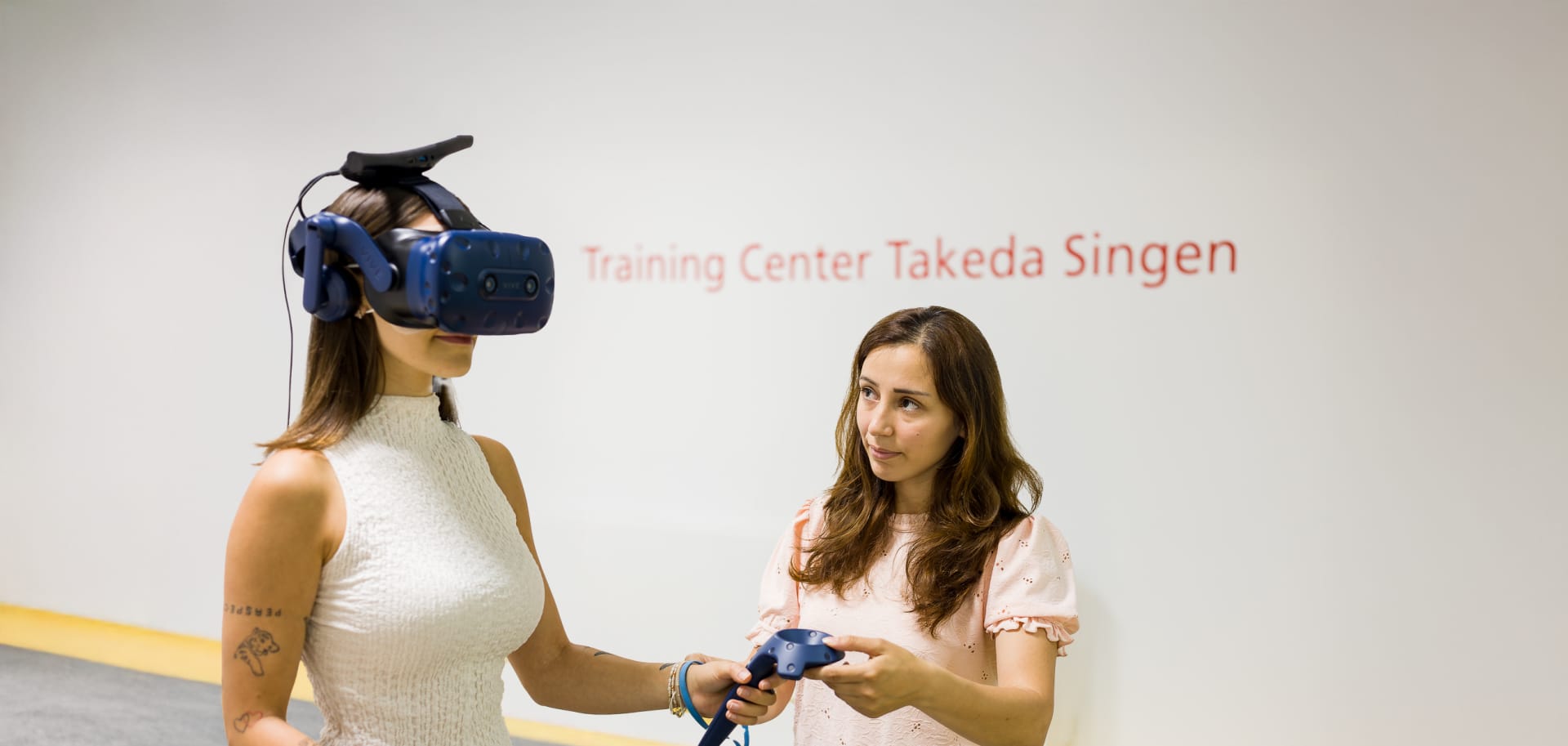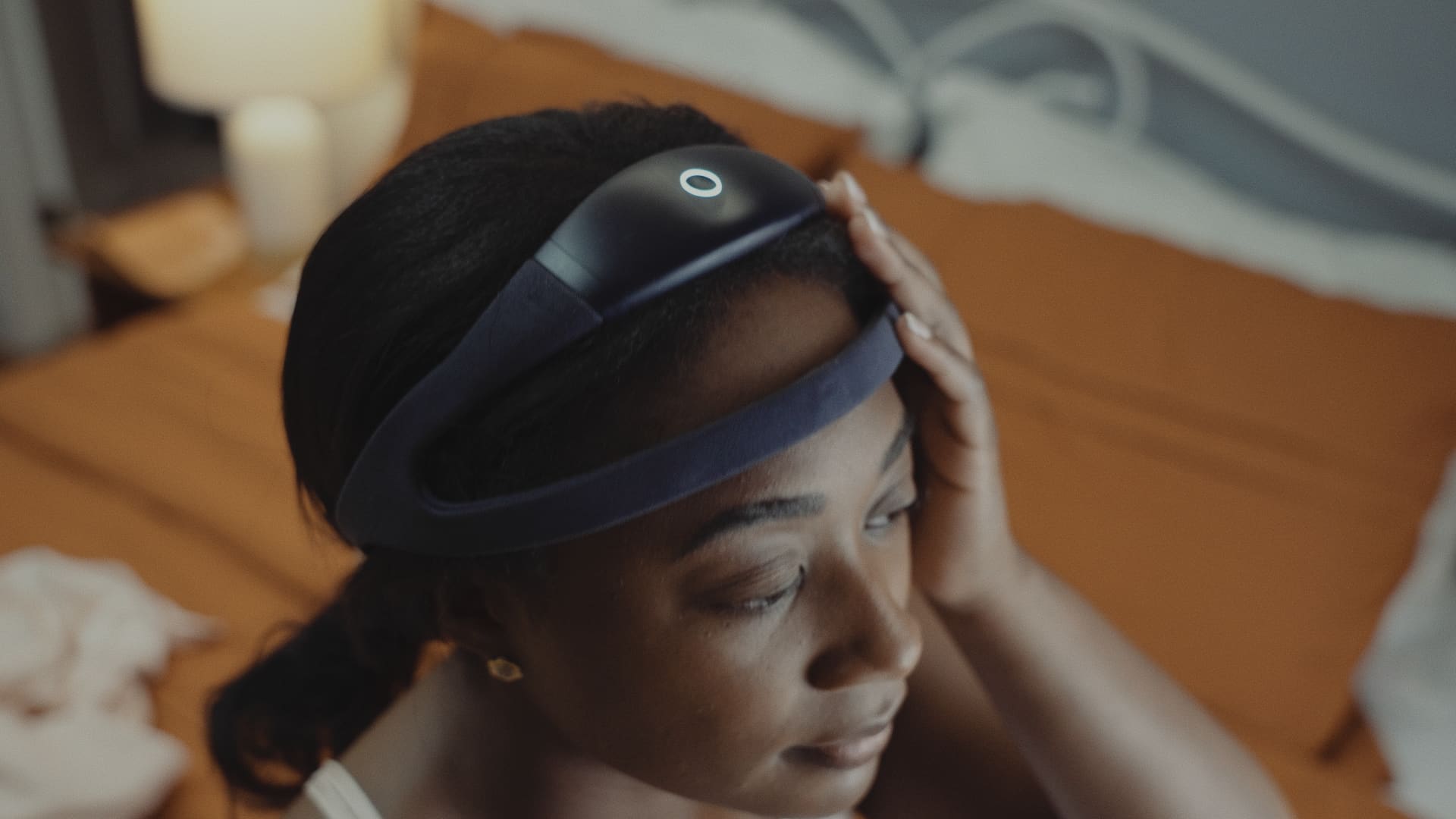Reshaping operational efficiency with VR and AR technology | Takeda Stories

Reshaping operational efficiency with VR and AR technology
Watch the video to see how we’re extending human potential to develop medicines that transform lives.
What connects the steady hands of astronauts, the quick reflexes of goalkeepers and the precision of cleanroom operators at Takeda?
Virtual reality (VR) technology is transforming how each of them trains and performs.1,2
Our innovative VR program provides immersive simulations that help prepare cleanroom operators before they enter high-stakes environments. Linda Wildling, a member of Takeda’s Digital, Data & Technology team for Global Manufacturing & Supply and Global Quality, explains that by creating risk-free, interactive learning scenarios, VR makes the invisible visible, transforming complex processes into clear, tangible experiences. And, ultimately, this technology can help us with cleanroom operations in areas such as inflammatory bowel disease, rare blood disorders and blood cancer, as well as in the testing and manufacturing of a vaccine that protects against dengue fever.
“Trainees can practice cleanroom protocols and equipment handling anytime, anywhere, with real-time feedback that identifies errors and reinforces proper techniques,” she says. “This flexibility reduces disruptions to critical operations while boosting knowledge retention, ensuring our operators are equipped to deliver high-quality therapies for patients.”
Virtual Reality @ Takeda
By leveraging advanced technologies like VR and AR, we’re improving the quality and efficiency of our processes. These leading-edge technologies are also helping to make our operator and engineer roles more attractive and future ready. It’s a great example of our digitalization journey and our approach to scaling innovation across the manufacturing network.
For Thomas Wozniewski, global manufacturing & supply officer at Takeda, our leadership in this area underscores Takeda’s commitment to the kind of values-driven innovation that has been key to our longevity and will be a critical part of our future.
“Innovation is key for us at Takeda,” he says. “By leveraging advanced technologies like VR and AR, we’re improving the quality and efficiency of our processes. These leading-edge technologies are also helping to make our operator and engineer roles more attractive and future ready. It’s a great example of our digitalization journey and our approach to scaling innovation across the manufacturing network.”
The VR program is supported by a globally standardized, scalable framework, making it accessible across our sites. Integration with our learning management system enables seamless tracking of training records and compliance with Good Manufacturing Practices (GMP) as well as regulatory standards, such as the U.S. Food and Drug Administration (FDA), European Union pharmaceutical legislation (EudraLex) and United States Pharmacopeia (USP).
“This ensures our training remains effective and aligned with industry best practices, which ultimately saves time and resources while reducing costs through risk avoidance and minimizing scrap or waste,” says Linda.
Augmented reality (AR) is also improving how we train and support our teams. Instead of relying on traditional manuals, AR provides step-by-step visual instructions right in the workspace, making complex procedures easy to follow. And by using “see-what-I-see” technology, remote experts can work alongside field teams in real time, offering guidance to quickly solve issues, reduce downtime and boost productivity.
Across 13 sterile filling sites on three continents, VR technology is already delivering a faster and improved training experience. With 10,000 VR trainings conducted each year, training time for new employees can be reduced by up to 30 percent, while deviations – unexpected events during production – can be reduced by up to five percent. And our leadership in manufacturing innovation hasn’t gone unnoticed. Earlier this year, the International Society for Pharmaceutical Engineering (ISPE) invited us to share our achievements with engineers worldwide in their magazine.
“It was an honor to showcase how our cutting-edge technologies are shaping the future of manufacturing,” says Linda. “We want to continue to lead by example and contribute to continuous learning for our industry peers.”
References
- Varjo & Boeing: A New Era in Astronaut Training Using Virtual Reality. https://varjo.com/boeing-starliner/
- Virtual training, real effects: a narrative review on sports performance enhancement through interventions in virtual reality, National Library of Medicine. https://pmc.ncbi.nlm.nih.gov/articles/PMC10622803/
Share this story



